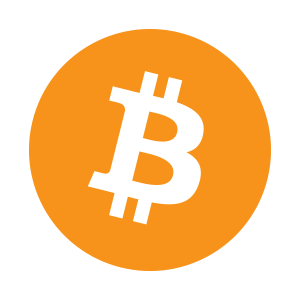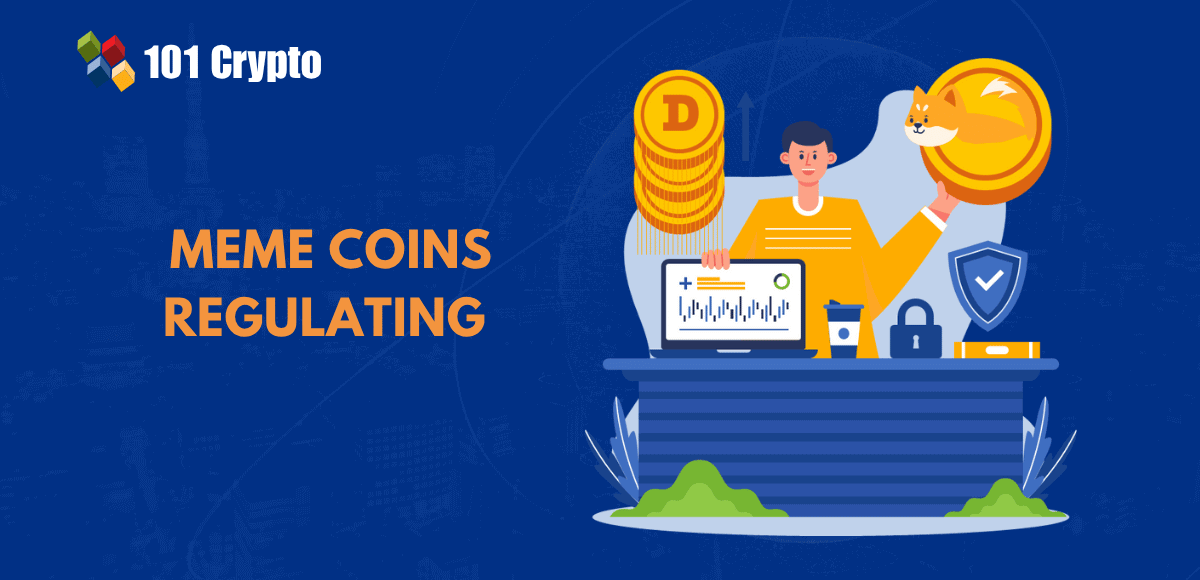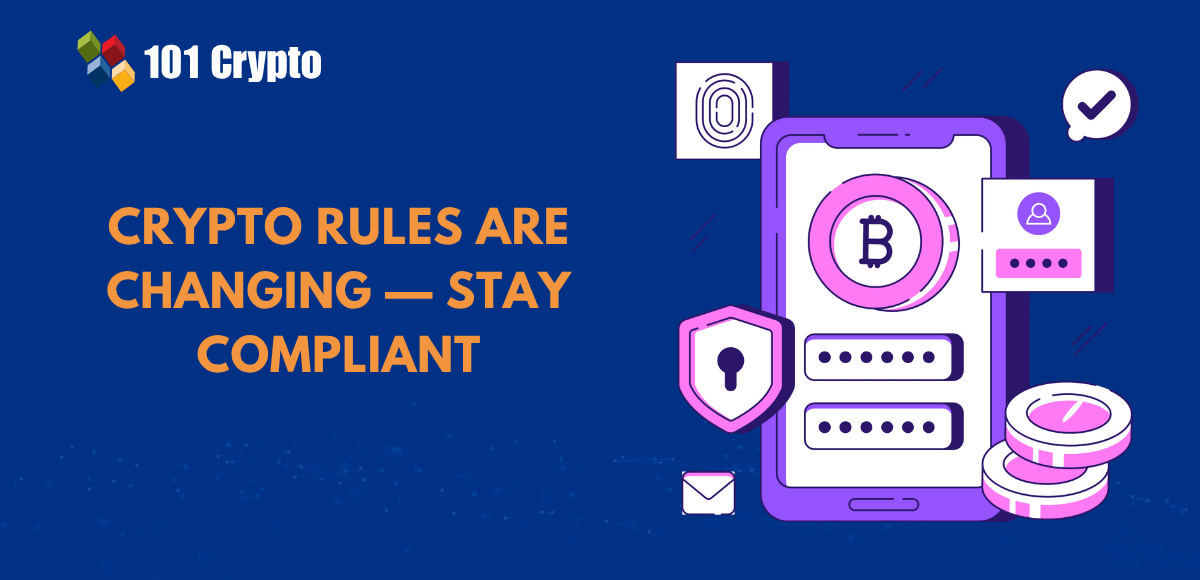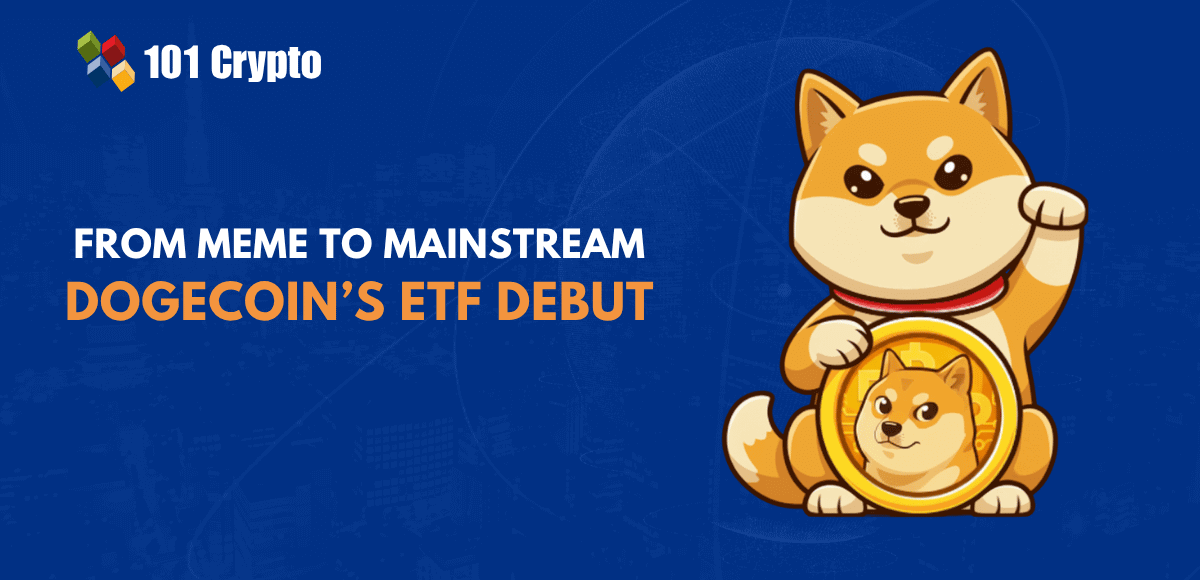Meme coins, the unpredictable and playful crypto coins inspired by social trends, jokes, and internet memes, have witnessed massive popularity among crypto investors. Popular for their viral appeal and community-driven hype, these coins have attracted millions of investors. And this massive popularity of meme coins has made meme coins regulations evolve rapidly to address compliance trends, legal risks, and other issues.
Are the regulations really evolving? Are meme coins safe for investment? Can new regulations eliminate the risk of rug pull? Well, in this blog, you will find the answers to all these questions. Besides, will also discuss the compliance trends that every investor should consider while investing in meme coin projects.
Enroll now in the Bitcoin Fundamentals Free Course to gain deep insights on how the Bitcoin blockchain works.
Meme Coins: Viral Tokens in the Crypto Market
In general, meme coins are speculative or fun ventures that drive value from speculative momentum, community engagement, and internet culture. However, unlike stablecoins and utility tokens, meme coins lack clear use cases and intrinsic value. Some popular examples of these coins include PEPE Coin, Shiba Inu, Dogecoin, Bonk, and Official Trump.
Some coins have witnessed immense popularity and achieved billion-dollar market caps, while others are poorly managed, short-lived, and scams. And to avoid any issues, investors should know about meme coins regulations and potential risks involved in meme coin projects, such as compliance gaps and rug pulls.
Understanding meme coin legal risks and how they fit into the changing regulatory frameworks is crucial for investors as well as creators to navigate this volatile market space.
Are There Any Regulations on Meme Coins?
These coins generally operate in a legal gray area, and regulatory clarity on these coins still remains limited. However, things are changing, and many regulatory authorities are now scrutinizing these coins carefully due to the risk they bring.
For instance, the SEC or the Securities and Exchange Commission recently informed that most meme coins are not securities and they are assessing more coins to decide whether they should be considered as commodities or securities.
If listed as securities, then the coin issuers will have to follow all legal requirements, like registration, reporting, etc. Meme coins are generally used for speculative and entertainment trading, and that places these coins outside regulatory oversight.
However, these legal gaps don’t mean that meme coins are illegal to buy. Some state and federal agencies are stepping into meme coins regulations oversight, police fraud, deceptive advertising, and market manipulation related to these projects.
Apart from this, the Know Your Customers and Anti-Money Laundering rules are also deployed for digital assets. These rules are influencing meme coins regulations, making them more transparent and stricter.
Major Meme Coin Legal Risks
It can be said that the lack of comprehensive meme coin regulations leads investors and creators to face various legal risks. Some key risks are:
- Pump-and-Dump and Market Manipulation: These coins are frequent targets for misleading promotion, price manipulation, and sudden market crashes that can cause substantial investor losses.
- Rug Pulls: It happens when developers drain liquidity or abandon the project completely. Rug pulls can make tokens worthless.
- Copyright and IP Risks: Some meme coins utilize trademarked and copyrighted memes without any authorization. It can lead to legal disputes over IP or Intellectual Property rights.
- Financial and Tax Reporting Challenges: With evolving crypto tax laws, meme coin holders often face issues in reporting losses, gains, and transactions. This can lead to penalties.
Key Compliance Trends in Meme Coins
To navigate increasing regulatory scrutiny successfully, meme coin projects are increasingly adopting various compliance and meme coins regulations practices that can lower legal risks and increase their credibility. Some key meme coins compliance trends include:
-
Transparent Marketing and Tokenomics
Meme coin projects are now offering accessible and clear disclosures about their mechanisms, purpose, and potential risks. This helps avoid misleading claims and developer trust among investors.
-
KYC/AML Implementation
Multiple DeFi platforms and exchanges have deployed the Know Your Customer and Anti-Money Laundering protocols for identity verification and to eliminate suspicious activity.
-
Security Checks and Smart Contract Audits
Independent and regular audits of smart contracts have become a standard in the crypto market. By reviewing smart contracts and security, it is possible to detect vulnerabilities and reduce the occurrence of a meme coin rug pull.
-
Regulatory Engagement
Some meme coin projects are actively engaging with regulators, and they are also following emerging standards like MiCA or Markets in Crypto-Assets Regulation, International Organization of Securities Commissions, and more. This ensures the project’s legal alignment.
Meme Coin Rug Pull- How to Avoid?
A major hazard for investors in the meme coin landscape is a meme coin rug pull. It involves a meme coin project raising funds from the public by selling tokens and then abruptly disappearing or shutting down the project. These scams defraud investors and also attract various legal issues.
Some common types of rug pulls are team exit, liquidity pulls, pump & dump, and fake projects. Some notable rug pulls include Squid Game Token, AnubisDAO, OneCoin, Uranium Finance, and Thodex. Wondering how to identify and avoid a meme coin rug pulls? Consider these tips:
- Thoroughly check the project’s team, community, goals, and technology. Ensure the team is reputable.
- Ensure that the project is audited, and it offers a complete audit report stating vulnerabilities and other details.
- Stay away from meme coins with unclear distribution or large insider allocations.
- Always avoid hype-only meme coin projects without any roadmap.
- Engage with the project’s community on different platforms to ensure its legitimacy.
- Use reliable exchanges with robust security and compliance protocols.
The Future: A Combination of Protection and Innovation
Even though there are some regulatory obstacles and challenges present in meme coins regulations, the ecosystem of meme coins is growing. In fact, in the coming years, we may witness a balance between investor protection and innovation. Here are some major trends that are shaping the meme coin’s future.
Some projected trends about mem coin include:
- New Financial Instruments: Meme coin futures, derivatives, and ETFs are emerging, propelling meme assets to become mainstream finance. These new instruments will require custodial safeguards, regulatory oversight, and formal registration, protecting investors.
- Risk-Based Regulatory Frameworks: Many regulators are now exploring classification systems that can analyze and categorize meme coins based on their risk exposure and decentralization level. This will support stricter rules and tailored oversight.
- Cross-Border Regulation: As meme coins are accessible across the world, regulators are now coordinating their efforts to reduce international fraud and harmonize laws related to crypto.
- Smart Contract Audits: Certification schemes in smart contracts will help check code integrity and lower vulnerability while ensuring trust for meme coins.
- Enhanced Disclosure: Meme coin projects may soon need to offer standardized and transparent disclosure about associated risks, tokenomics, and governance. This will allow investors to make the right decisions.
Meme coin regulation is changing, prioritizing risk-based frameworks, global cooperation, and smart contract audits. If everything goes well, these coins may become legitimate financial instruments.
Meme Coins- Evolving but Need Smart Regulations
Some crypto investors may call meme coins a joke, but they are now cheating an exciting segment in the crypto market with real-world impact. But it is clear that with their popularity, risks related to meme coins are also growing. Without clear regulations, investors may face uncertainty. Besides, some may even exploit the lack of regulatory oversight.
To grow, this ecosystem should embrace legal compliance, community accountability, and transparency. For now, investors should stay updated about meme coin legal risks, compliance guidelines, and regulations to reduce risks and safely navigate through the meme coin mania.
Disclaimer
The article should not be taken as, and is not intended to provide any investment advice. Claims made in this article do not constitute investment advice and should not be taken as such. 101 Crypto shall not be responsible for any loss sustained by any person who relies on this article. Do your own research!







